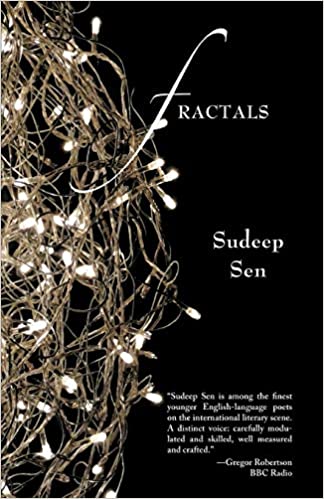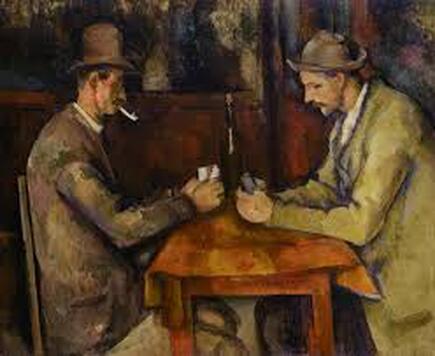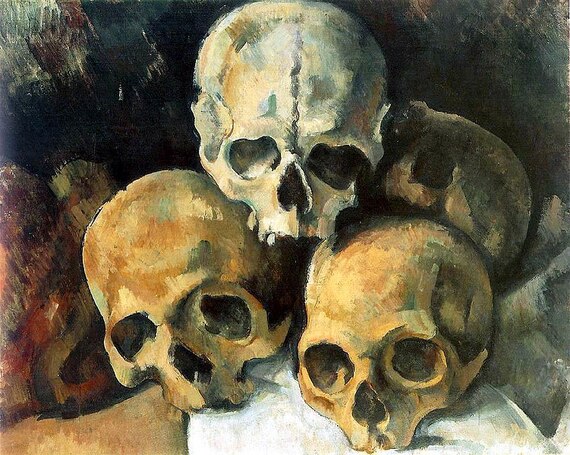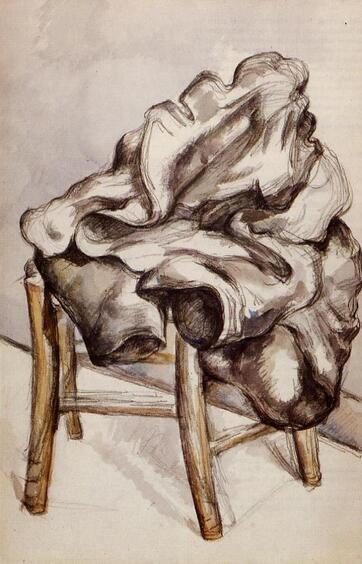|
Ekphrasis, Curation, and Visual Art in Sudeep Sen’s Fractals Introduction Contemporary Indian English poetry in the third millennium becomes the primary matrix for cosmopolitan art. It provides a cultural and spiritual cornucopia, takes us back to the forgotten past, celebrates the diverse change in various forms of art and serves as a vital interface between the text and the image. From terse, unpunctuated verse to the folk tales, from the giant historical moment to the success stories of digital installation of art, contemporary Indian English poetry retrieves episodes and fragments from every corner of the world that we inherit. It becomes a space where various art-forms merge and morph into unconventional literary pieces. Since there is a constant change in the modes of writing, use of white space, and themes in literary pieces, especially in Contemporary Indian English Poetry, a more meta-representational and rhetorical conceptualization of the term ekphrasis is desirable. James A.W. Heffernan in the introduction of his book Museum of Words: The Poetics of Ekphrasis from Homer to Ashbery writes, “ekphrastic poetry celebrates the power of the silent image even as it tries to circumscribe that power with the authority of the word. Over the ages, its practitioners have created a museum of words about real and imaginary paintings and sculptures” (1994). Drawing on a wide variety of forms of art from all around the world, especially paintings and photographs, the article tries to explore the spectrum of ekphrastic poetry in details. Transforming words into movements and spaces into poetry Sudeep Sen in one of his finest collections of poems, Fractals, recreates visual poetry by expanding his work beyond language and text. Recognized as the seminal voice of the contemporary poetry scene, Sudeep Sen has made an outstanding contribution in shaping the contours of contemporary Indian English poetry and has paved the way for a new generation of sensibility. Fractals; a collection of over 300 poems split into three sections: “Newer Poems: 1998-2015”, “Selected Earlier Poems: 1980-1997” and “Selected Translations: 1997-2015”and various sub-sections exudes an aura of exoticism. The very first poem of this collection titled “Mediterranean” (21) creates the foreground for startling images airbrushed with subtle layers of emotions. To quote a few lines: My lost memory white and frozen now melts colour ready to refract This poem conforms to the hallmark of ekphrastic poetry, where Sen unfolds the secret of Alexandria, a port city located on the Mediterranean Sea in northern Egypt with erudition and poetic lyricism. The expression “my lost memory/ white and frozen/ now melts colour/ ready to refract” connects us with Lewis Mumford’s book The City in History, where he writes “what was left of the old urban drama was a mere spectacle…” The backbone of Egypt’s culture, once brimming with life, art galleries, and rich cultural history comes alive with Sen’s "Mediterranean." Sudeep Sen’s “Blue Nude”(131-82) section from his collection Fractals displays his penchant for ekphrasis. The “Blue Nude” section (inspired by Henri Matisse’s Blue Nude series of cut out figures) is further divided into six sub-sections – ‘Dreaming of Cezanne’, ‘Picasso Triptych’, ‘Matisse Sequence’, ‘Canva’, ‘White Balance’, and ‘Mixed Media’. These six sub-sections immerse the readers in subjective experience, with its amazing range in terms of art-forms and artists from all around the world. The poems in this section also reiterate Sen’s engagement with visual arts. The first section, ‘Dreaming of Cezanne’, has three poems, all based on the paintings of Post-Impressionist painter and French artist Paul Cezanne (1839-1906). The first poem, “The Cardplayers” is based on Cezanne’s series of oil paintings of the same name. Painted between 1890 and 1896, there are five paintings in this series: one is in a private collection; the others are in Musee d’ Orsay, the Courtauld Gallery, the Barnes Foundation and the Metropolitan Museum Art. The version varies in size, background and the number of players. Through these paintings, the artist reflects the life of the ordinary locals or the Provencal peasants quietly smoking and playing cards. Sen in his poem “The Cardplayers” refers to the smallest (47.5 × 57 cm) and the most refined version of Cezanne’s painting. The poem catches every detail of the painting, from the colour of the background to the shape of the furniture, the position in which the players are sitting and the dress they are wearing. Reading the poems from this section is like visiting inside an artfully and meticulously curated museum of poetry which includes art pieces from every generation and of every kind. Sen’s artistic eye catches every microscopic detail. To quote a few lines from the poem “Cardplayers” (133): The deal was done and stamped on the brown rough leather of the parchment. The wooden table’s crooked legs hardly held its own weight, let alone the gravity of smoke, spirit, and connivance. The second ekphrastic poem in this section is “The Skulls,” (135) based on Cezanne's still life The Skulls, painted in his final period between 1890 and 1906. Cezanne’s work constitutes the most powerful link between the ephemeral and the permanent. Skulls on wood, on carpet, on drapery – studies encrypted like an unwrapped pyramid of bones, mummies waiting to be embalmed in oil and graphite – as I sprinkle water and colour on the shrine of my night gods. Painted in a pale light, using graphite and watercolour, this painting has inspired many artists including Picasso and Andy Warhol. This painting depicts four skulls, placed in a pyramidal configuration. These skulls take us to the traditional theme of a symbolic work of art called “Vanitas” which focuses on the temporality of life, the futility of all kinds of pleasure and the certainty of death (Google Arts & Culture). We find a similar theme of transience and mutability in the poem “Dungeon” (188) where the poetic persona of Sen visits a dungeon to look for Cezanne’s bones. Sen writes, “I had come looking for a holograph of Cezanne’s will and skulls, but what I found was a score-sheet – an opera with the aria highlighted.” The third poem from the section “Dreaming of Cezanne” titled “Jacket on a Chair” (136) is based on the same theme. In the book Cezanne in the Studio: Still Life in Watercolors, Carol Armstrong writes, “With its empty, crumpled garment, Jacket on a Chair is even more blatant in suggesting human inhabitation by dint of its very absence than Cezanne’s sketches of empty chairs.” (34) The chair’s wooden frame provided a brief skeleton, but it wasn’t enough to renew the coat’s shape, the body’s prior strength, or the muscle to hold its own. The poems in this section are not just the celebration of different art forms, but it has to do a lot with human psychology, their dreams, delusion, and predicaments as well. Sen explores the complex and convoluted mysteries of the human psyche. His poems are consciously cerebral and appeal to a wide selection of people coming from different backgrounds and having different mindsets. Sudeep Sen’s Fractals also brings forward an array of artists from different genres. From the eastern miniaturists to artists and writers like Gustave Flaubert, Andre Gide, Jorge Luis Borges, Milan Kundera, Italo Calvino, Kazuo Ishiguro and Pico Iyer, to saint and spiritual poet Shah Latif, from one of the finest Israeli poets Yehuda Amichai to the representative of Slovenian “historical avant-garde,” Srecko Kosovel, these artists provide exciting meta-poetical fervor to Sen’s poetic atlas. Sen’s extraordinary sensory awareness, sensitivity to rhythm, astonishingly rich images, and a wide array of influences summarize what ekphrastic poetry can do. The philosophical insights, images, cultural references, and epic assemblage calibrate historical horizons and establish genealogies of events. The fusion of the visual with the verbal, allows the poetry to move freely without getting restricted in one medium. Dr. Queen Sarkar Dr. Queen Sarkar is a multilingual poet, an academician, and a translator based in Ranchi, India. Sarkar has been appointed as the “Ambassador of Good Will Seeds of Youth XXI Century, India – United Nations of Letters –Uniletras.” She is also the Ambassador of Peace for Switzerland/ France. Her review articles, poems, and research papers have been published in reputed international journals and anthologies. Sarkar has done her Ph.D. in Contemporary Indian English Poetry from IIT Kharagpur. Her research areas includes – poetry, translation, cross-cultural communication, cultural studies, adaptation and appropriation. Sarkar’s poems have been translated in Spanish, Arabic, and Gujarati. She is also the bonafide member of World Nations Writer’s Union.
0 Comments
Your comment will be posted after it is approved.
Leave a Reply. |
The Ekphrastic Review
COOKIES/PRIVACY
This site uses cookies to deliver your best navigation experience this time and next. Continuing here means you consent to cookies. Thank you. Join us on Facebook:
July 2024
|







